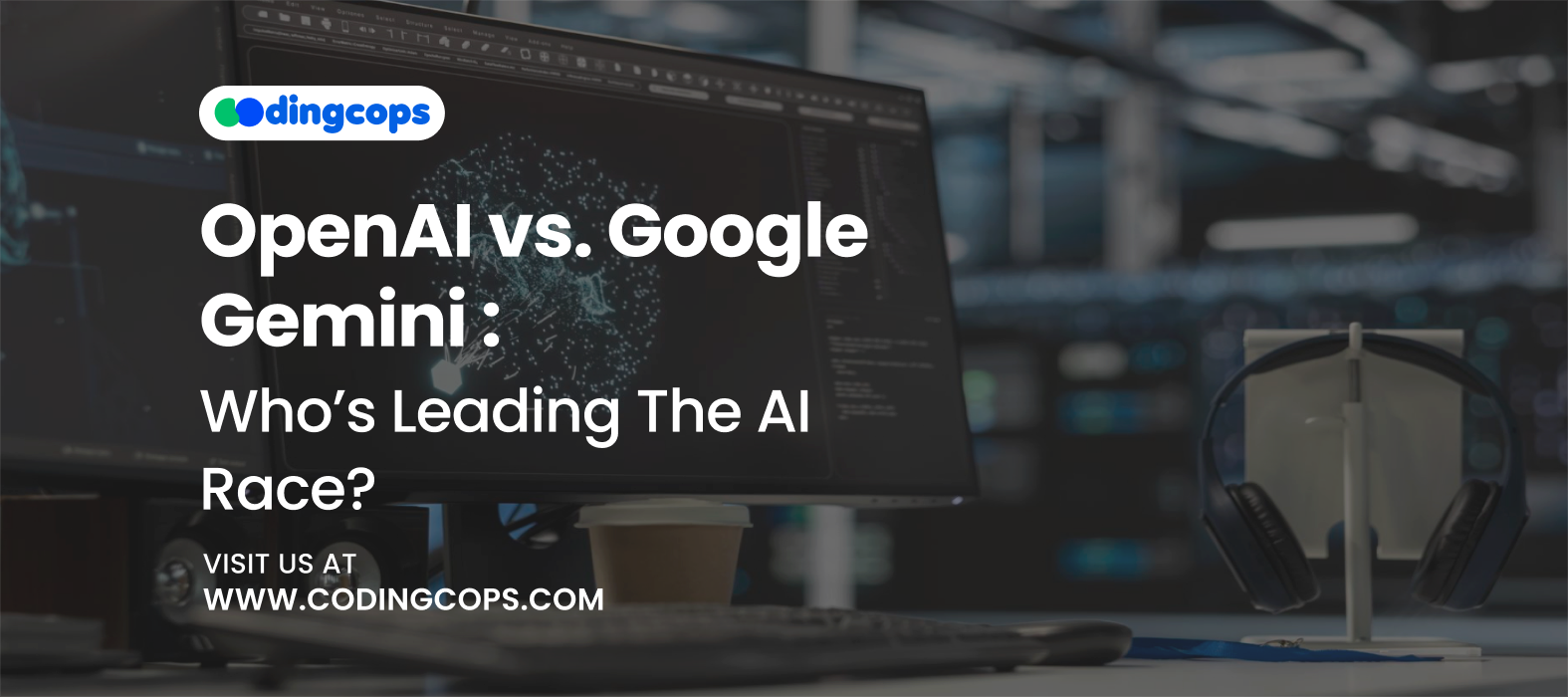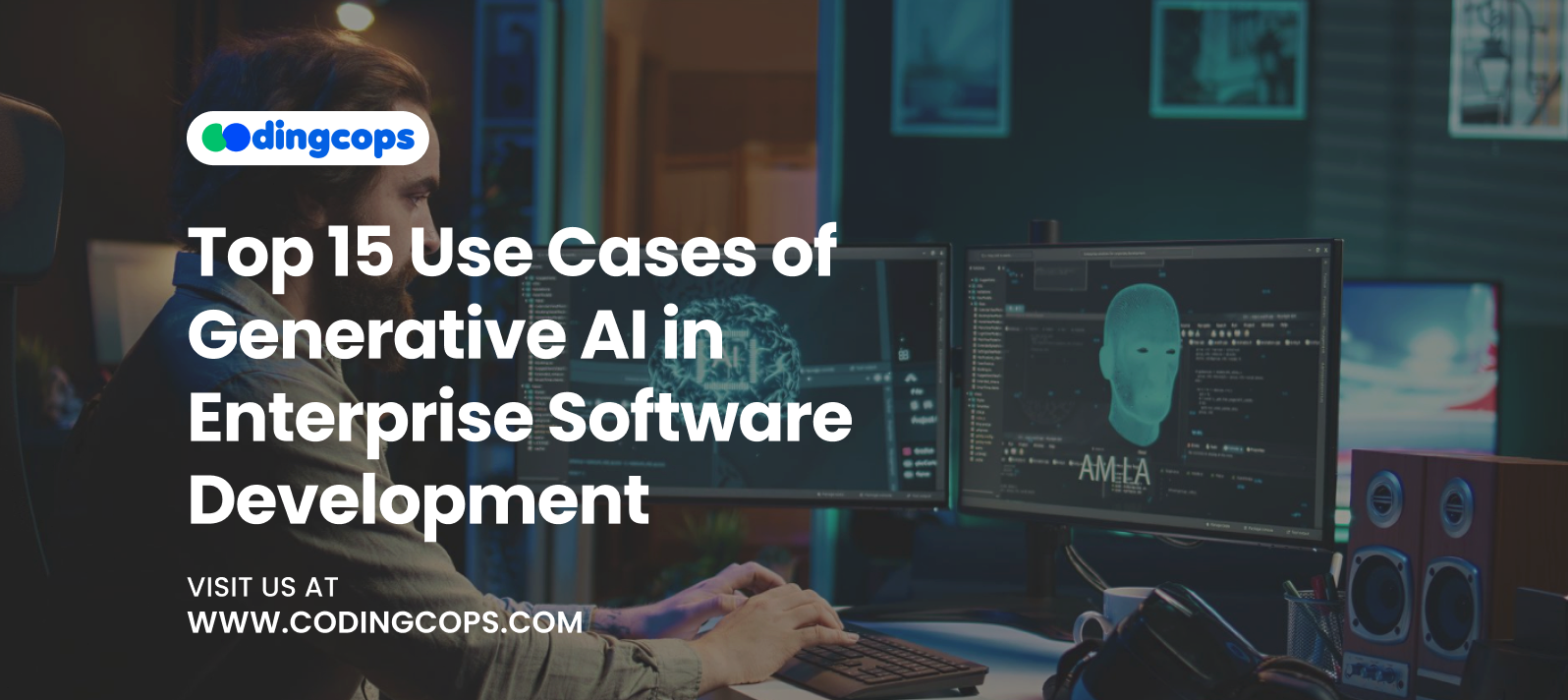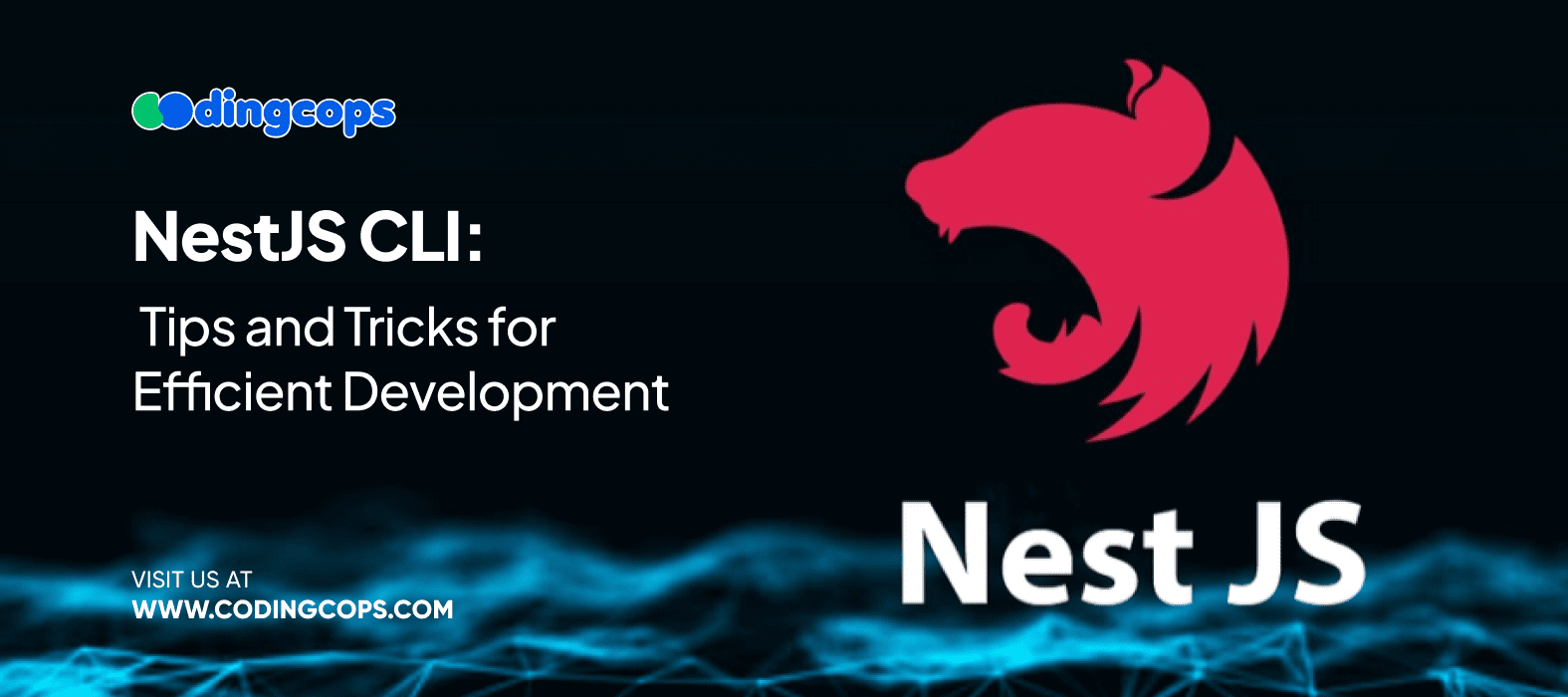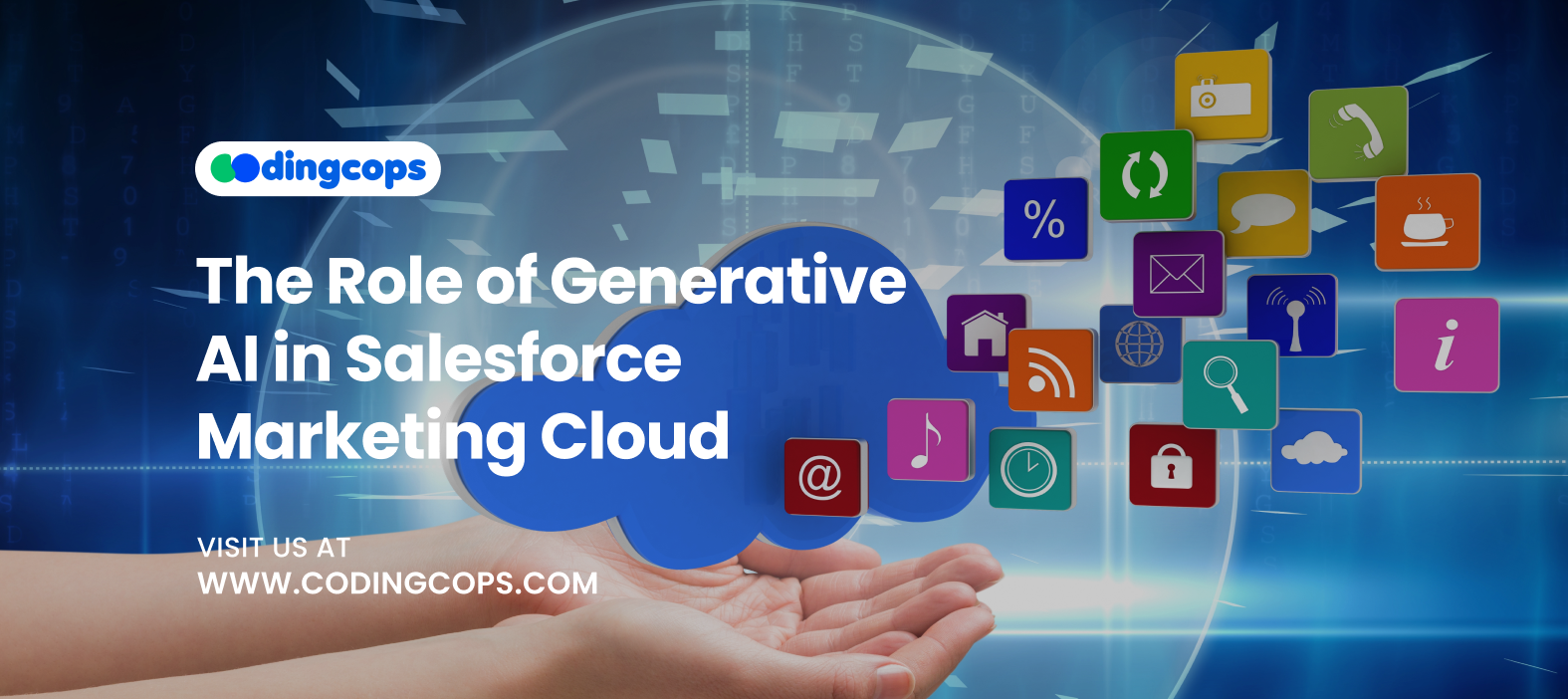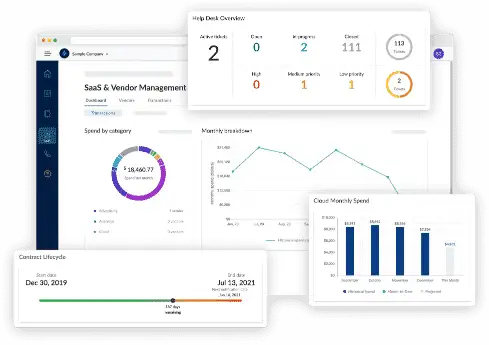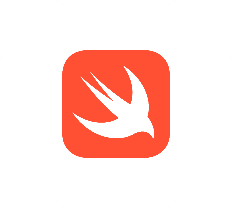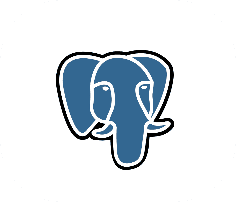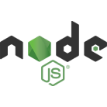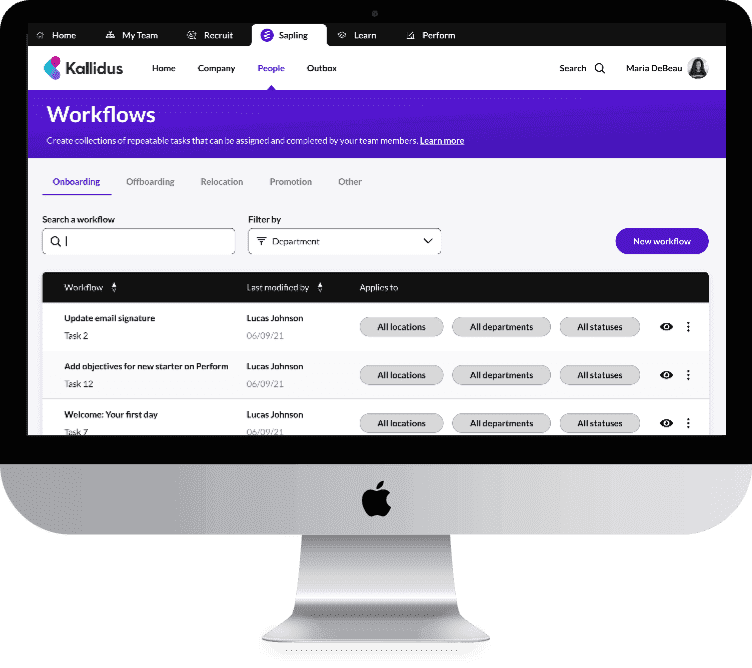According to McKinsey & Company, the use of generative AI has increased from 33% to 71% in the last year. This is due to two important AI models: OpenAI and Google’s Gemini. With OpenAI’s GPT series and Google’s Gemini vying for dominance, the AI race is no longer just about innovation; it’s about who can scale faster and integrate deeper into our lives.
So, in this blog, we will discuss the differences and strengths of OpenAI and Gemini. Additionally, we will contrast their technological advancements and commercial positioning. Knowing where each is in this race helps you see where AI could be going in the future, whether you are a developer or just an AI fan.
OpenAI
OpenAI’s core philosophy revolves around safety and equitable distribution of AGI benefits. Moreover, the company has consistently benefited itself as a leader in AI research transparency and releasing foundational papers on reinforcement learning and multi modal systems.
Moreover, OpenAI has created an ecosystem around ChatGPT and its APIs:
- Custom GPTs: Users can build their own versions of GPT models without coding, training them with custom instructions or uploading documents.
- Plugins: The plugin ecosystem in ChatGPT allows users to fetch real time data or interact with third party tools like Zapier.
- API Access: Developers can build applications on top of GPT and Whisper via OpenAI’s API platform. This powers thousands of AI driven startups and productivity apps.
- ChatGPT Team and Enterprise Plans: OpenAI has rolled out subscription based plans for teams and large organizations.
Google Gemini
Gemini is Google’s most advanced AI model family to date, and a key pillar in the company’s strategy to stay competitive in the generative AI space. Moreover, Gemini wasn’t built from scratch; it changed from a long history of AI research:
- Transformers, the architecture underlying all modern large language models, were first introduced by Google researchers in the 2017 paper “Attention is All You Need.”
- Much of what is now feasible in AI alignment and decision making is influenced by DeepMind’s contributions to reinforcement learning and AI safety.
Additionally, Google has chosen to include Gemini into its main products, like as Gmail and YouTube, rather than developing brand new stand alone programs like OpenAI’s ChatGPT.
What are the Differences between OpenAI and Gemini?
1. Technologies and Models Comparison

OpenAI and Google Gemini have each developed families of models that power a wide range of AI applications. However, while they aim for similar end goals, multimodal understanding and real time interaction, their model architecture and capabilities differ.
Model Families
OpenAI is known for its GPT family, with its latest flagship being GPT-4.1 and GPT-4o, a multimodal model that handles text and vision inputs in a unified architecture. Furthermore, GPT-4o was designed with real time interaction in mind. This enables it to perform tasks like speech translation and advanced reasoning, all in one seamless system.
On the other hand, Google Gemini has become a full fledged model family after DeepMind and Google Brain merged their AI teams. The Gemini family features models that are trained with a native multimodal design. This means that they were built from the ground up to handle text and audio as integrated inputs. For instance, Gemini 2.5 Pro supports massive context windows. Hence, this makes it highly capable for long context tasks like analyzing documents.
Training Approaches
Safety alignment and reinforcement learning from human feedback are two of OpenAI’s main model development cornerstones. This approach improves the ability of OpenAI models to understand human intent and deliver outcomes that satisfy users. Additionally, OpenAI works with businesses to integrate Azure and provide computing resources, which enables it to efficiently grow its training runs.
Google takes a data heavy, scale first approach. Gemini models are trained using Google’s extensive data repositories. Moreover, Google’s models are built with modern sparsity techniques and architecture refinements that aim to reduce latency and improve performance without sacrificing output quality.
While both companies use transformer based architectures, their training data sources and internal toolkits vary, leading to different strengths in performance.
Tool Ecosystems
Through ChatGPT and the OpenAI API, OpenAI has developed a tightly integrated platform that makes it simple for developers and companies to access and incorporate AI resources. Notably, ChatGPT now includes a feature rich interface with memory and custom GPTs. It also includes code interpreter and plugin access. Furthermore, OpenAI’s tools are geared toward versatility and consumer facing interactions, offering value in coding and content creation.
Conversely, Google’s Gemini ecosystem is more deeply entrenched in the Google Workspace. Additionally, Gemini is integrated into Gmail and Search, offering users intelligent support right where they are. Additionally, Google’s long standing dominance in productivity and search tools supports the ecosystem by providing millions of current users with a flawless user experience.
2. Developer and Business Ecosystem
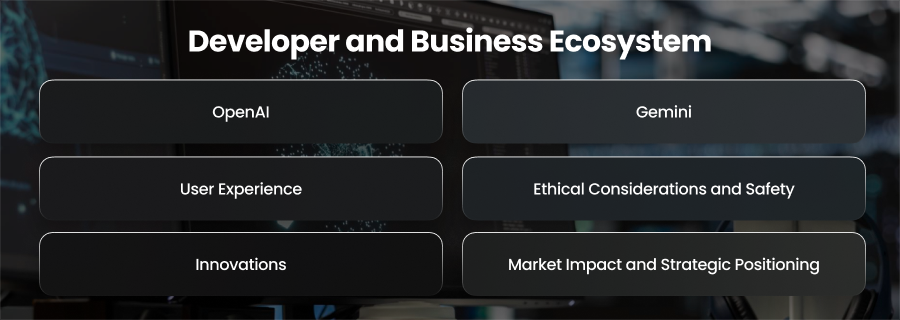
OpenAI
OpenAI has cultivated a rich ecosystem that spans individual developers and academic researchers. Moreover, the company’s success in this space is largely due to its early lead with ChatGPT and the versatility of its API offerings via the OpenAI platform. Moreover, these technologies are heavily utilized in software development. Furthermore, developers now find it quite simple to integrate AI capabilities into their products thanks to OpenAI’s SDKs.
Moreover, OpenAI’s strategic partnership with Microsoft has significantly expanded its reach. Through this alliance, OpenAI’s model are deeply integrated into Microsoft products such as Word under Copilot. This increases the apparent scalability and dependability of OpenAI’s infrastructure through Azure cloud services, while simultaneously providing developers and companies with access to AI enhanced capabilities within well known tools.
Users may now develop unique experiences on top of GPT-4 thanks to OpenAI’s support for a custom GPT. Additionally, this plugin approach encourages third party development and creates a vibrant marketplace where users and developers can work together and benefit from innovative ideas. The addition of memory features and the ability to create personalized assistants further strengths the platforms appeal for business user cases.
Gemini
Gemini platform is rapidly catching up in building a developer and business friendly ecosystem. While it entered the public spotlight later than OpenAI, Gemini utilizes Google’s dominance in cloud services and enterprise tools to make a strong entrance. Additionally, Google Cloud’s Vertex AI, a centralized platform for maintaining and training AI models, gives developers access to Gemini models. Hence, this integration simplifies the AI development workflow and positions Gemini as a core part of Google’s broader AI infrastructure.
One of Gemini’s standout advantages is its integrations across Google’s massive suite of products. Furthermore, Gemini provides a smooth transition into AI-powered operations for companies who are currently a part of the Google ecosystem. Additionally, developers may use Gemini for a number of purposes, such as incorporating natural language understanding into Android apps or creating AI assistants within Gmail.
Google is working hard to make Gemini more accessible to a wider range of developers. Also, the Gemini API and support within the Google AI Studio allows for easy prototyping and model testing. Also, while OpenAI focused on web based interfaces and standalone apps, Gemini is quickly embedding itself into foundational developer platforms, where AI-driven coding assistants are now native features.
User Experience
In the AI competition, accessibility and user experience are crucial because they dictate how simple it is for humans to use and engage with these potent technologies.
ChatGPT from OpenAI provides a simplified and incredibly user friendly experience:
- User Interface: Clean and minimal UI that’s easy for first time users.
- Accessibility: Voice assistance, file uploads via the GPT-4o paradigm, and mobile accessibility are all included.
- Custom GPTs: Users can build tailored versions of ChatGPT for specific use cases without needing to code.
- Tiered Access: Free tier for general use; paid plans unlock more powerful models and features.
Google Gemini, on the other hand, takes a more integrated approach:
- Native Integration: Gemini is baked into Google Workspace tools and Android, making AI features feel like natural extension of daily workflows.
- On Device Use: Gemini Nano powers Android smartphones with offline capabilities for privacy focused users.
- Multimodal Interactions: Text can be used for user interaction, providing a customizable interface based on user preferences.
Ethical Considerations and Safety
OpenAI has placed safety and alignment at the forefront of its mission. With its charter clearly stating that AGI should benefit all of humanity, OpenAI commits to long term safety research and broad distribution. Moreover, initiatives such as the use of reinforcement learning from human feedback and the involvement of external safety reviewers show OpenAI’s proactive stance.
- OpenAI formed the Superalignment team to tackle risks associated with future AGI.
- It incorporates extensive safety fine tuning and monitoring systems in ChatGPT deployments.
- Transparency is promoted through frequent system cards and detailed release notes.
Gemini has also embraced safety as a core tenant, though it’s often more conservative and less public facing than OpenAI. Additionally, DeepMind has a long history of safety research in AI that predates many of its rivals, having made important contributions to interpretability and safety in reinforcement learning.
- Gemini follows the DeepMind Ethics & Society principles. It emphasizes fairness and interpretability.
- Its responsible AI framework aims to reduce biases and hallucinations while preventing misuse through usage limits and model testing.
- Google has been more cautious in rolling out generative features, favoring slow releases backed by human evaluations.
Innovations
OpenAI has innovated by democratizing cutting edge AI for end users. GPT-3 introduced the idea of general purpose language models for the masses. Moreover, GPT-4 pushed the limits further with multimodal capabilities.
Notable OpenAI innovations include:
- ChatGPT
- Function Calling & Tool Use
- DALL-E and Whisper
- Custom GPTs and GPT Store
Google Gemini has pioneered a more foundational shift in architecture. While OpenAI iterates rapidly in deployment, Google has focused on scalability and versatility. Also, Gemini’ s models have been trained from the ground up to be natively multimodal, rather than bolt-on multimodality like in GPT-4.
Google innovation include:
- Gemini 2.5
- Native Multimodality
- Integration with Google Products
- AI Powered Search
Market Impact and Strategic Positioning
OpenAI operates with agulity and startup like speed. Moreover, it’s partnership with Microsoft has been transformative. This collaboration allows OpenAI to scale without building distribution platform itself. Furthermore, OpenAI’s and GPT Store business models offer monetization paths through developers and end users. Also, it’s taking steps toward enterprise and team based AI solutions, such as ChatGPT Enterprise.
Google, on the other hand, utilizes its massive ecosystem advantage. With billions of users, its distribution power is unmatched. Furthermore, Android Gemini App brings AI native experiences to smartphones. Moreover, Search Generative Experience threatens to upend the digital advertising model by integrating AI results directly into search, bypassing traditional web links. Furthermore, a vertically integrated AI approach is supported by Google’s extensive hardware.
OpenAI is therefore actively working to establish itself as the most open platform for AI development. But sometimes without customers noticing, Google is introducing artificial intelligence into everyday digital life.
So, if you want a side by side comparison of both OpenAI and Gemini, here’s a quick video.
Final Words
The AI race between OpenAI and Gemini is changing quickly, each pushing boundaries in innovation and usability. While OpenAI leads with accessibility and developer integration, Gemini’s ecosystem strength and deep integration with Google services make it a formidable contender.

